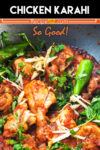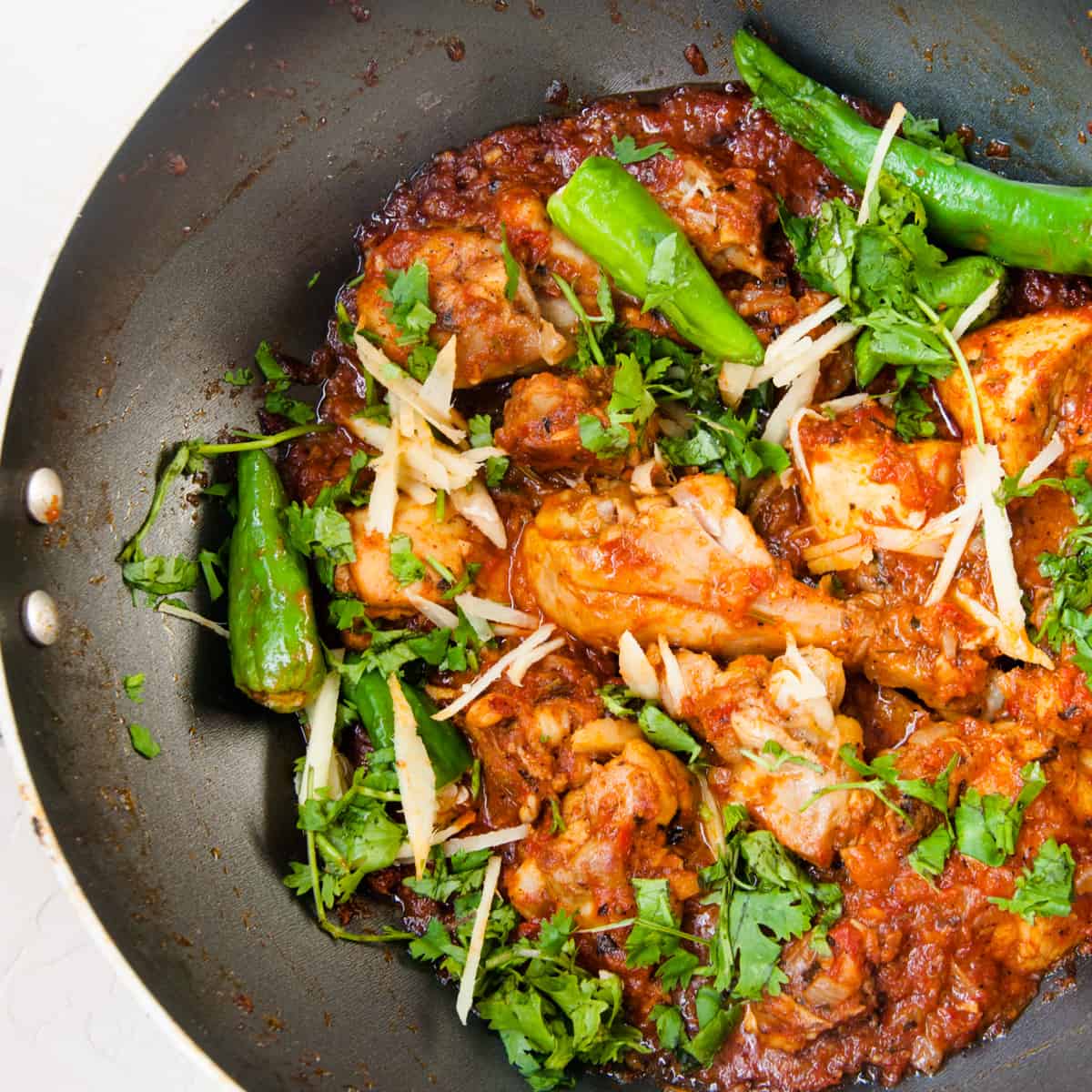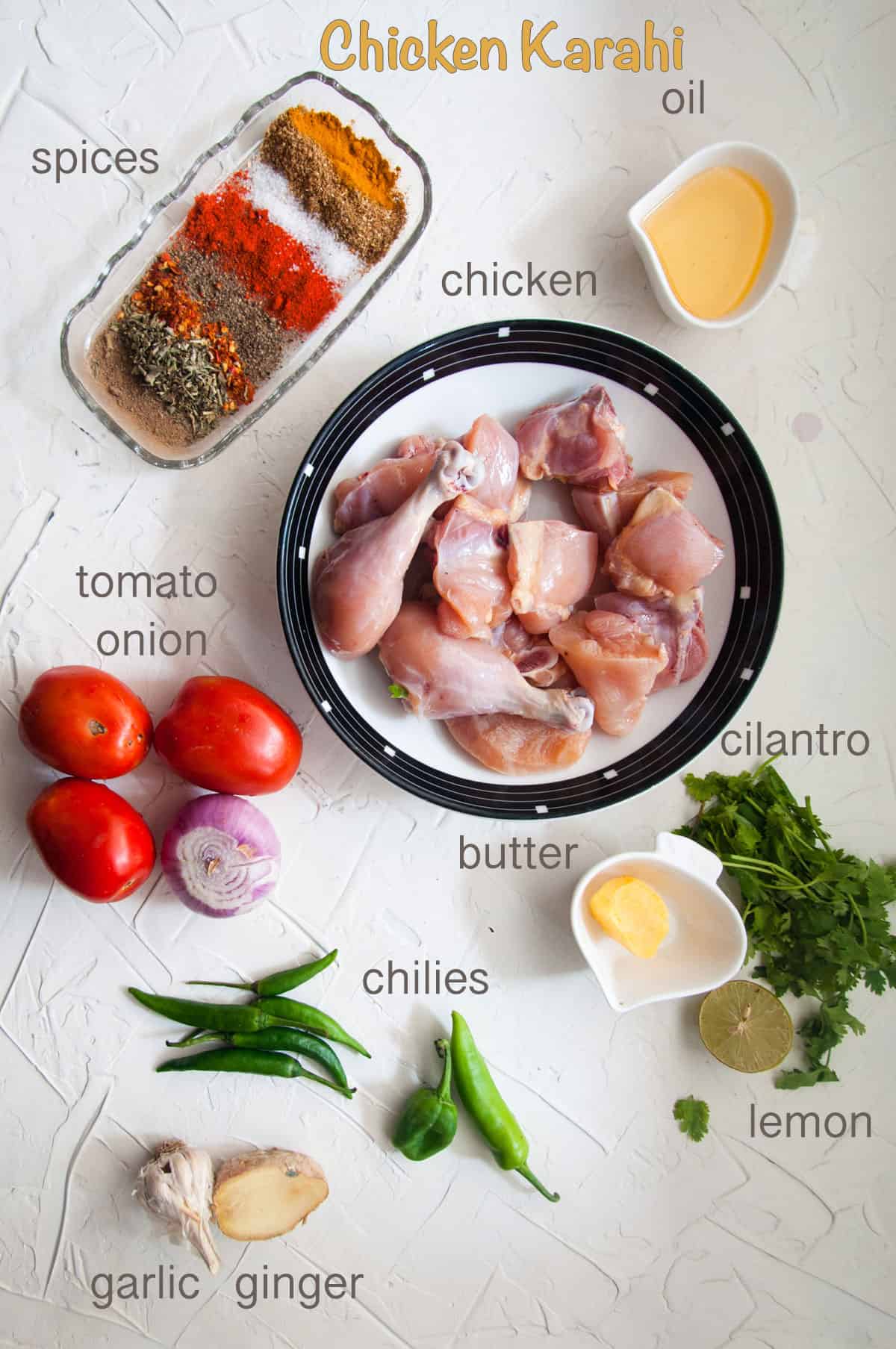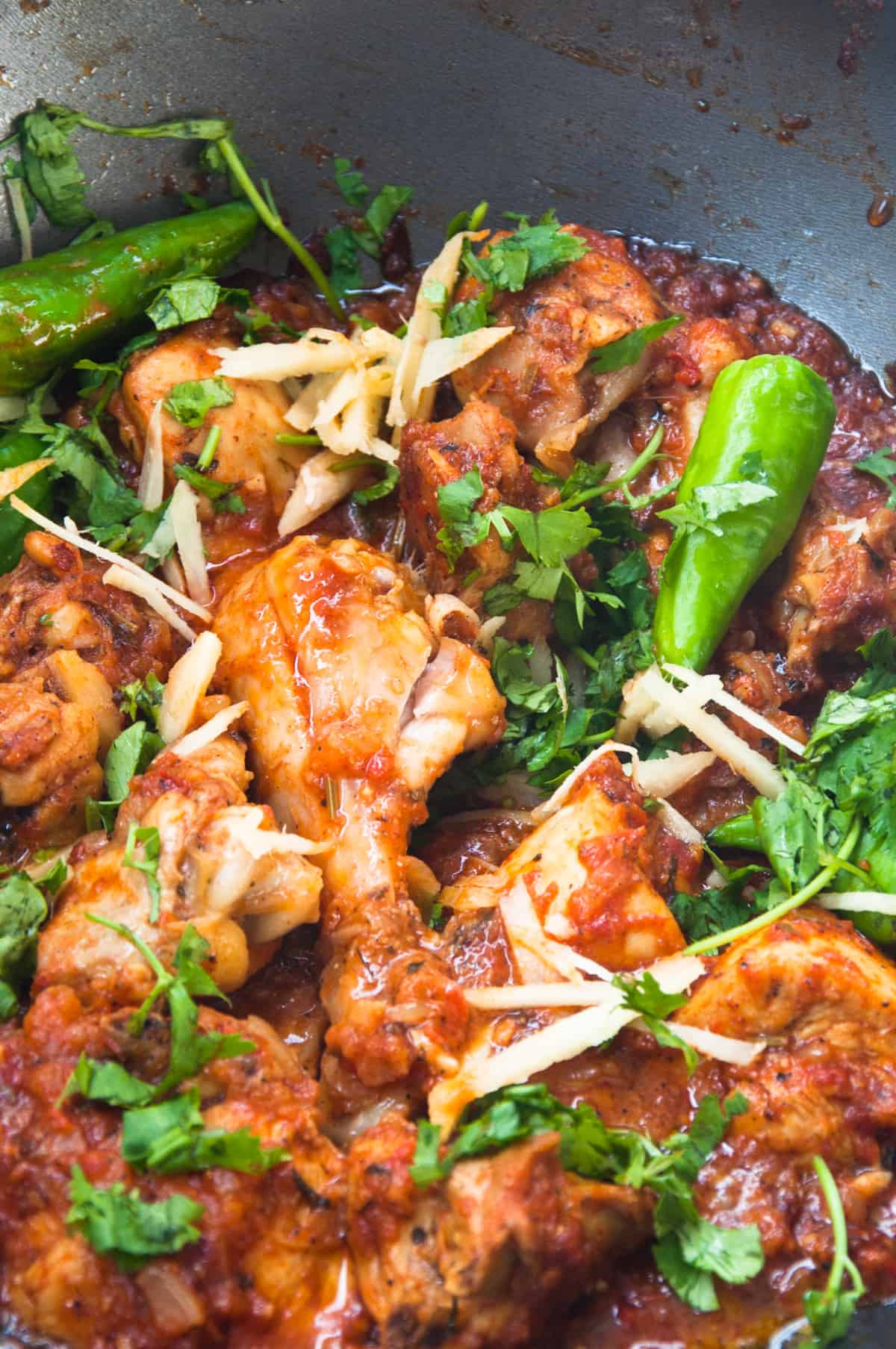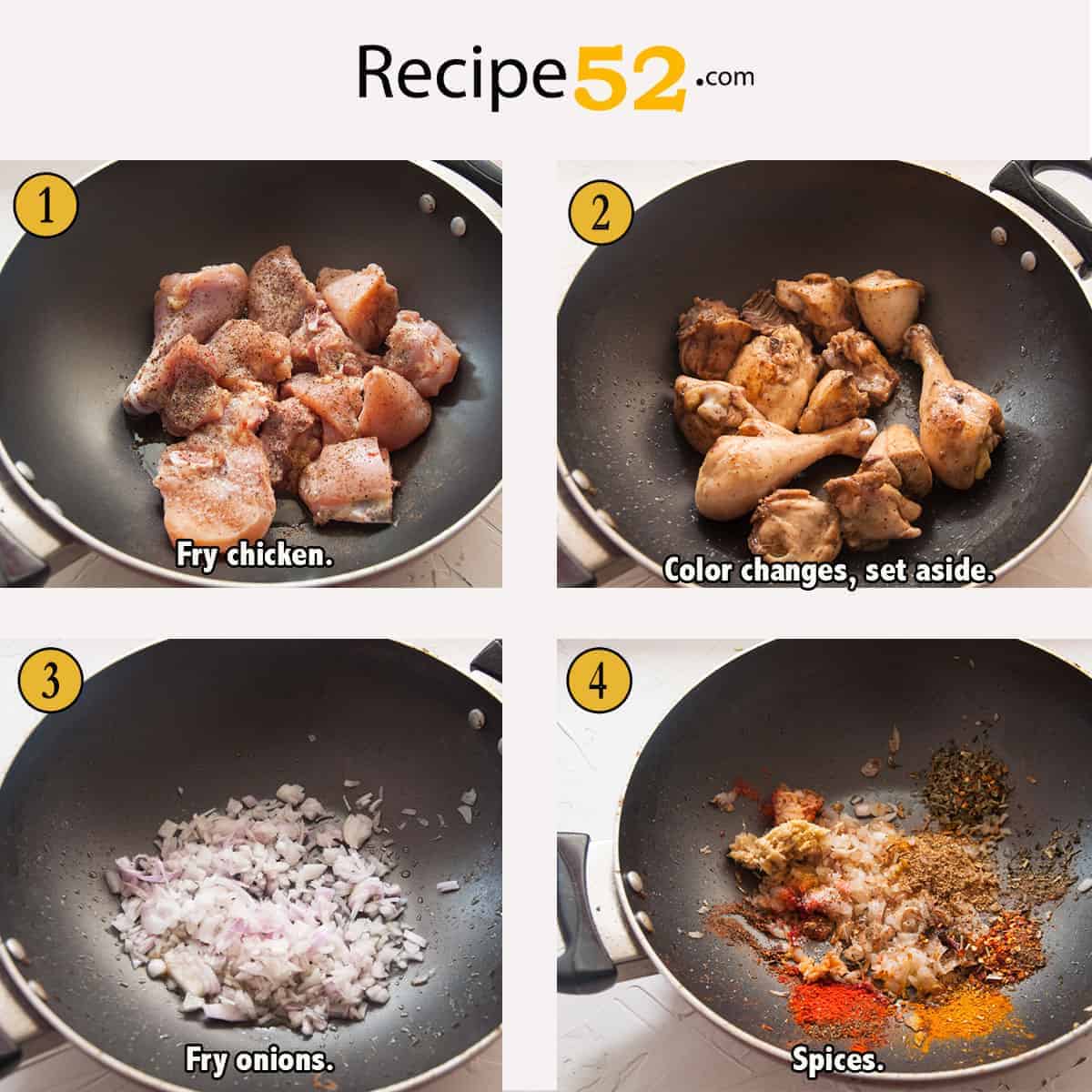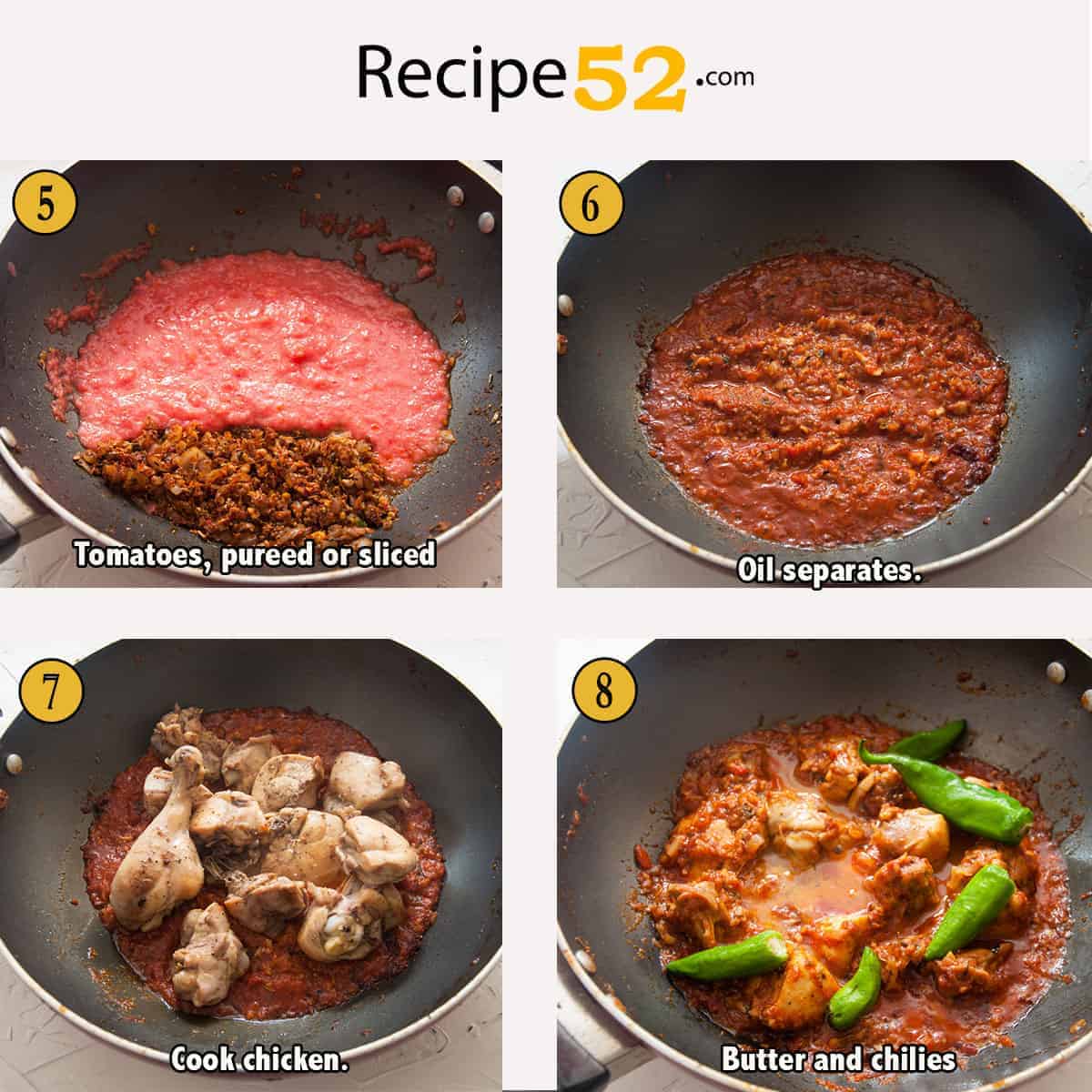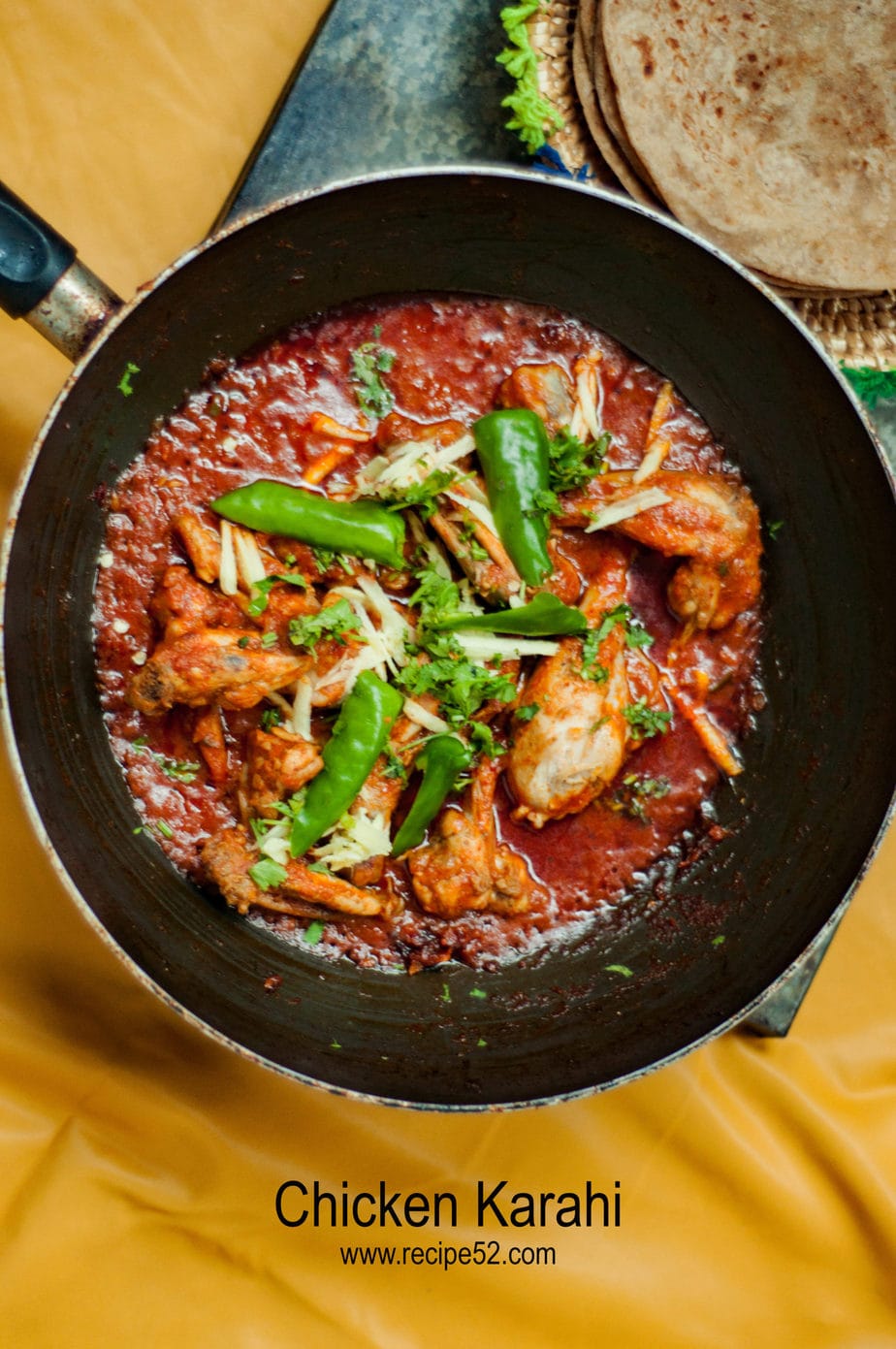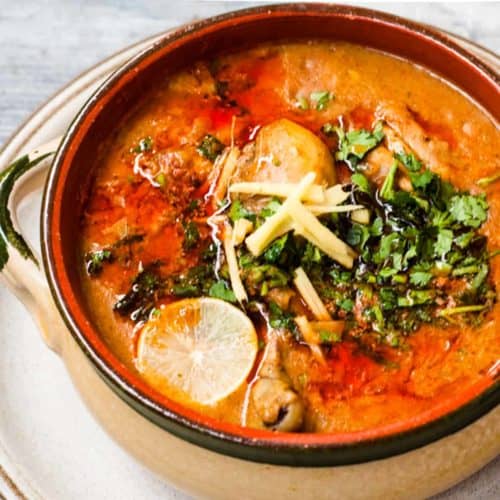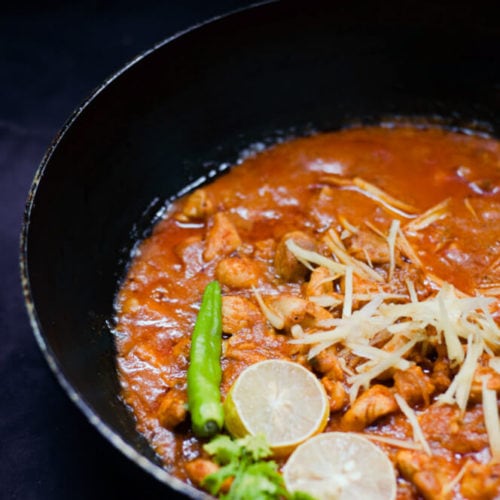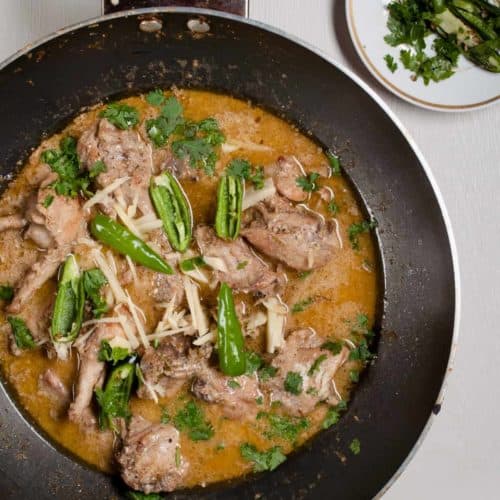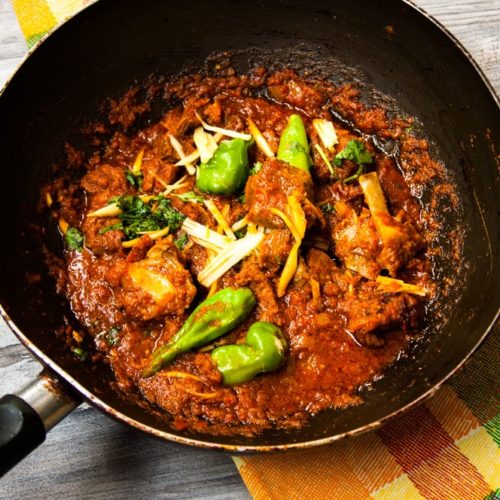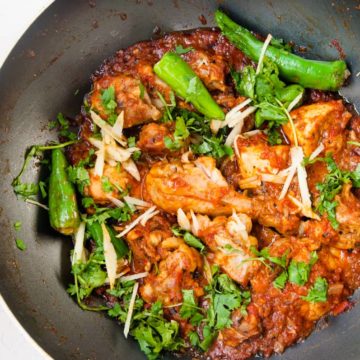Sunday night was always Karahi night. And my Father was the Karahi Master. Every Sunday, my Father would cook a huge Karahi for our entire extended family. We’d all gather together, chatting and gnawing away at the Karahi collectively, alongside platefuls of salad, fresh roti and lots of Coca Cola. I use the past tense when talking about this because this ritual sadly no longer occurs. Work commitments have changed, people have moved, routines have become less predictable. But the era of the Sunday Night Karahi is definitely a time I will forever look back at fondly.
🥲 Will the real Chicken Karahi please stand up?
I’m going to get straight to the chase here, no bending around the bush. I’m really fed up of red chicken curries pretending to be Chicken Karahis. When I was a 17 year old, my Mother tasked me with cooking a Chicken Karahi for dinner as she went out for the day. I was the Karahi Master’s daughter, surely I’d have learnt some things about making a decent Karahi you’d think? Alas, I didn’t. So maybe this frustration I have with fake Chicken Karahis stem from the fact that when I Googled ‘Chicken Karahi recipe’, I hit a recipe that wanted me to add large, clunky chunks of onion in a watery chicken soup and simmer it on low for 40 minutes. Blindly, I followed that recipe and my Father came home only to be absolutely mortified by my red chicken shorba. Whatever the reason, Karahis definitely hit a sentimental spot with me because of how much of a big celebration they were for my family. In life, I generally have a very low tolerance to negative things. I also have a very low tolerance for sub-parr Karahis, or curries claiming to be Karahis but then containing lots of onion, tinned tomatoes and a light hand on the ginger and garlic. Sorry. I’m a Karahi purist #sorrynotsorry.
❓ So, what IS a Chicken Karahi?
In the context of a curry, a Chicken Karahi is a tomato and ginger based, thick masala curry which is though to originate from the Khyber Pakhtunkhwa region. The original, authentic method of making it is a very specific one. As a general rule, Karahis are made from a base of ginger, garlic and tomatoes and also contain fresh green chillies, julienne-cut raw ginger and coriander. It’s a rather thick, jammy gravy and concentrated in flavour - yum! The traditional Karahi has undergone pretty major alterations over time. In order to bulk up the masala gravy and also cut the cost, onions have been added in so frequently in restaurants that many people know don’t even know the real recipe doesn’t contain onion. I’ve also seen variations use large chunks of red onion and capsicum much like a Chicken Jalfrezi. Modern day conveniences such as tinned tomatoes and pre-packaged jars of ginger and garlic are also pretty normal too. The recipe and instructions I’m sharing with you today is for the REAL DEAL Chicken Karahi. No bulking up with onions, everything is fresh, crisp and simple. It’s as close to the real deal as you can get, really. I want to break down EVERYTHING to you before proceeding on to the recipe, because if you can’t already tell, I am absolutely INSANE about getting Karahis right!
🥄 How to Make Chicken Karahi
The following is a basic outline of what we do to make a REAL, authentic Chicken Karahi. Full quantities and exact instructions can be found at the end of the post.
Your Meat - This could be lamb, mutton, beef, fish etc. For this we’re using chicken obviously. In terms of what kind of chicken to get, any bone-in medium chicken will suffice. In this recipe, I’ve used a small chicken which was under 800g - if you’re using a larger chicken, please increase the quantity of tomatoes, ginger, garlic and spices in proportion. Fresh Ginger - this is a very defining component of any Karahi. We use ginger in both the curry gravy as well as in the garnish in its raw form. Ginger is a very prominent flavour of a Karahi, so this is definitely not something to skimp on! Use a heavy hand with this! Fresh Garlic - another important component of the Karahi, however its flavour definitely does take a backseat in comparison to its aforementioned brother, ginger. Use a heavy hand with this too! We use quite a lot of garlic in Karahis to help bulk up the masala too, since there aren’t any onions in here. Fresh Tomatoes - A Karahi is a tomato based curry. The original, traditional recipe does not contain onions. I will repeat this again (and again and again) - onions have been added into mainstream Karahis for the sole reason that it bulks up the masala on the cheap. My recipe doesn’t use onions because quite frankly I’m a Karahi purist and if it contains onions, it ain’t a Karahi to me!
Fresh Green Chilli + Coriander - adds another fresh flavour element to the Karahi playing into the natural, crisp flavours of Karahis and also adds a wonderful fragrance. Spices - The spices in a Karahi are rather simple. This allows the natural flavours of the tomatoes, ginger, garlic etc all to shine!
We start by frying the chicken in a generous amount of oil. We can’t really get away from the oil here, soz. We than add in a LOT of minced ginger and garlic. Please, none of that pre-made, jarred stuff. FRESH ginger and garlic is KEY here. Remember I said Karahis have a huge emphasis on fragrance and natural flavours? These two ingredients are a MAJOR component of that and nothing does it like fresh does. We want to fry these just enough for the raw smell to go away - under no circumstances should you allow this to burn because it will taint the flavour of the Karahi.
We then go ahead and add all our tomatoes and spices. The tomatoes will release TONS of moisture and will break down into a beautifully jammy, thick gravy that will coat the chicken. We allow this mix to cook on high, stirring as needed to make sure it doesn’t catch at the bottom of the pan. We don’t put the lid on because we are concentrating and thickening the sauce. If we put the lid on, we won’t get that true Karahi look or flavour because we will be containing the moisture in our pan. The result will be a boiled/steamed chicken that looks more like a red chicken shorba. Not ideal for a Karahi!
At about the 15-20 minute mark, the gravy will have thickened nicely, the oil will be separating around the edges, the chicken will be cooked and things will be looking almost done. At this point, you can add the chopped coriander and chillis, turn the heat to low and allow everything to simmer together again without the lid. It can simmer for 5 minutes at this point. It’s all ready! Now you can garnish with your slices of ginger and serve as you please.
UPDATE 23/03/24: The love on this recipe has been UNREAL, guys! This recipe went viral on Instagram when I first published it. Honestly, I am still taken aback by how popular this recipe continues to be, even though it’s 4 years old. THANK YOU to everyone who has visited this recipe, tried it, sent me messages about it and cook it on the regular! You guys ROCK! On to the recipe! If you recreate this recipe I’d love to see! Please tag me in your pictures on Instagram - I’m @fatima.cooks! Enjoy, with love x
📋 Recipe
Enter your email & I’ll send it right over. Plus, you’ll get bonus Pakistani food-goodness from Fatima Cooks, like new recipe alerts, exclusive email-only recipes + more! By submitting this form, you consent to receive emails from me. Your details are secure. Opt-out any time.
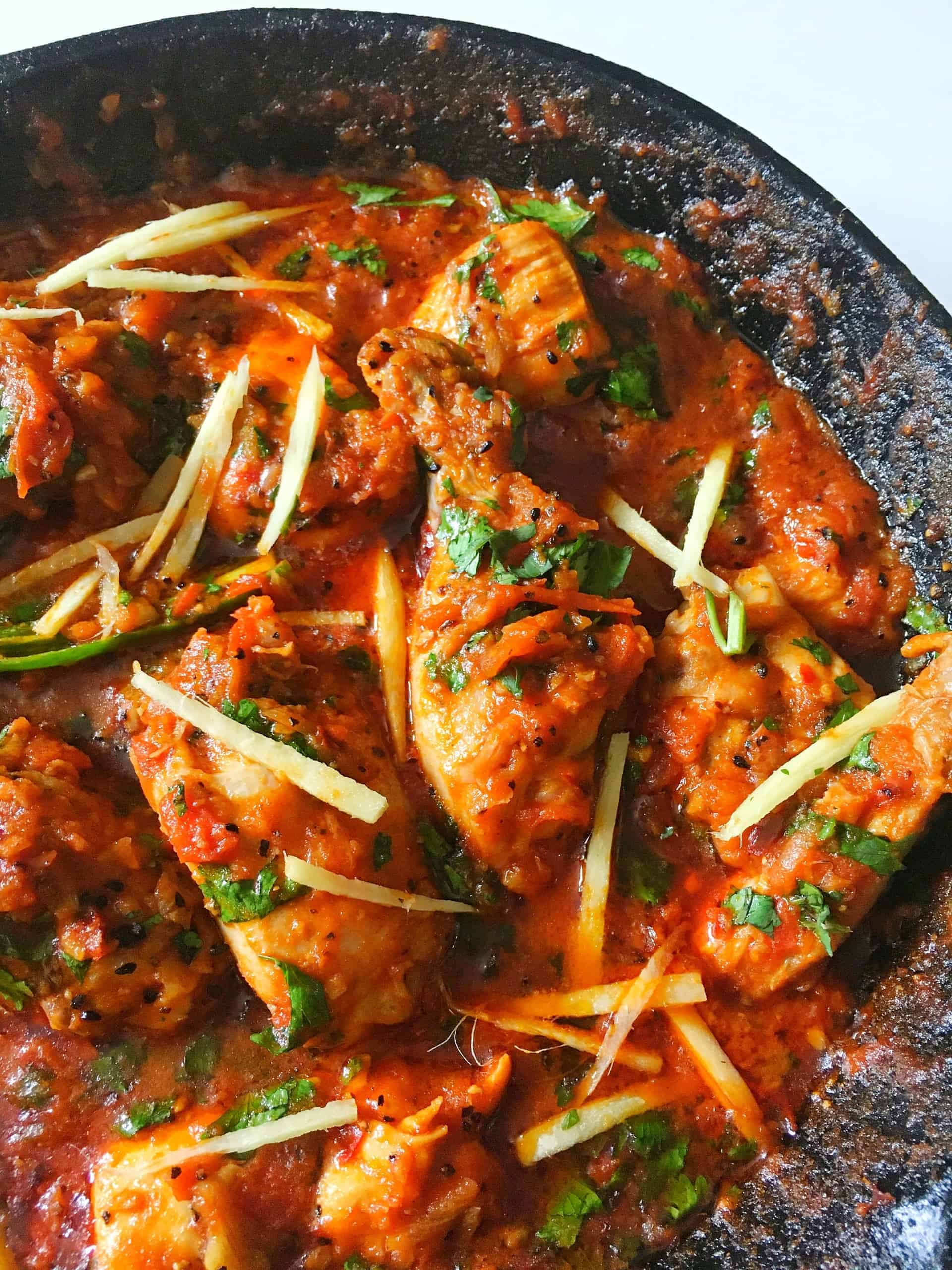
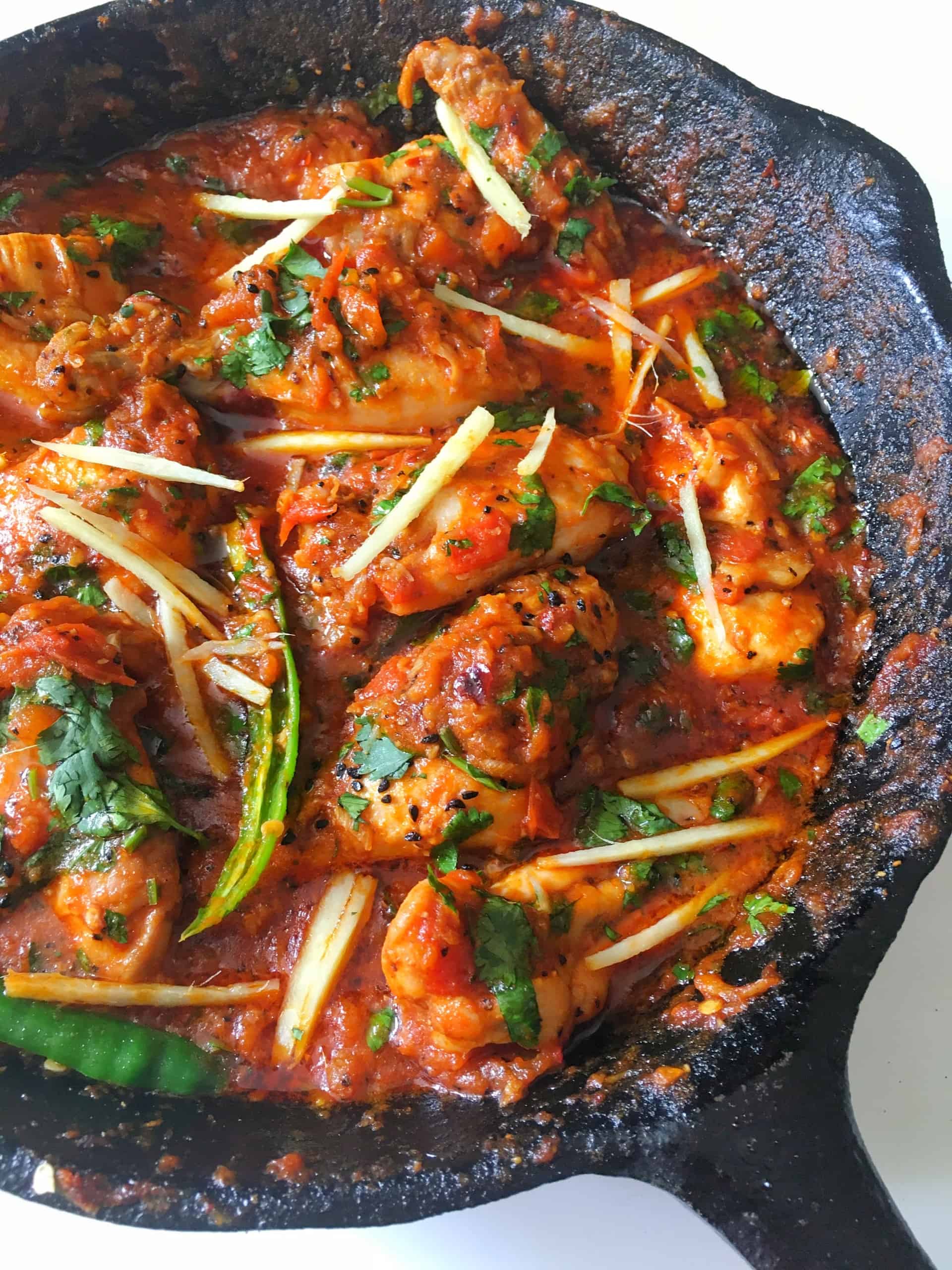
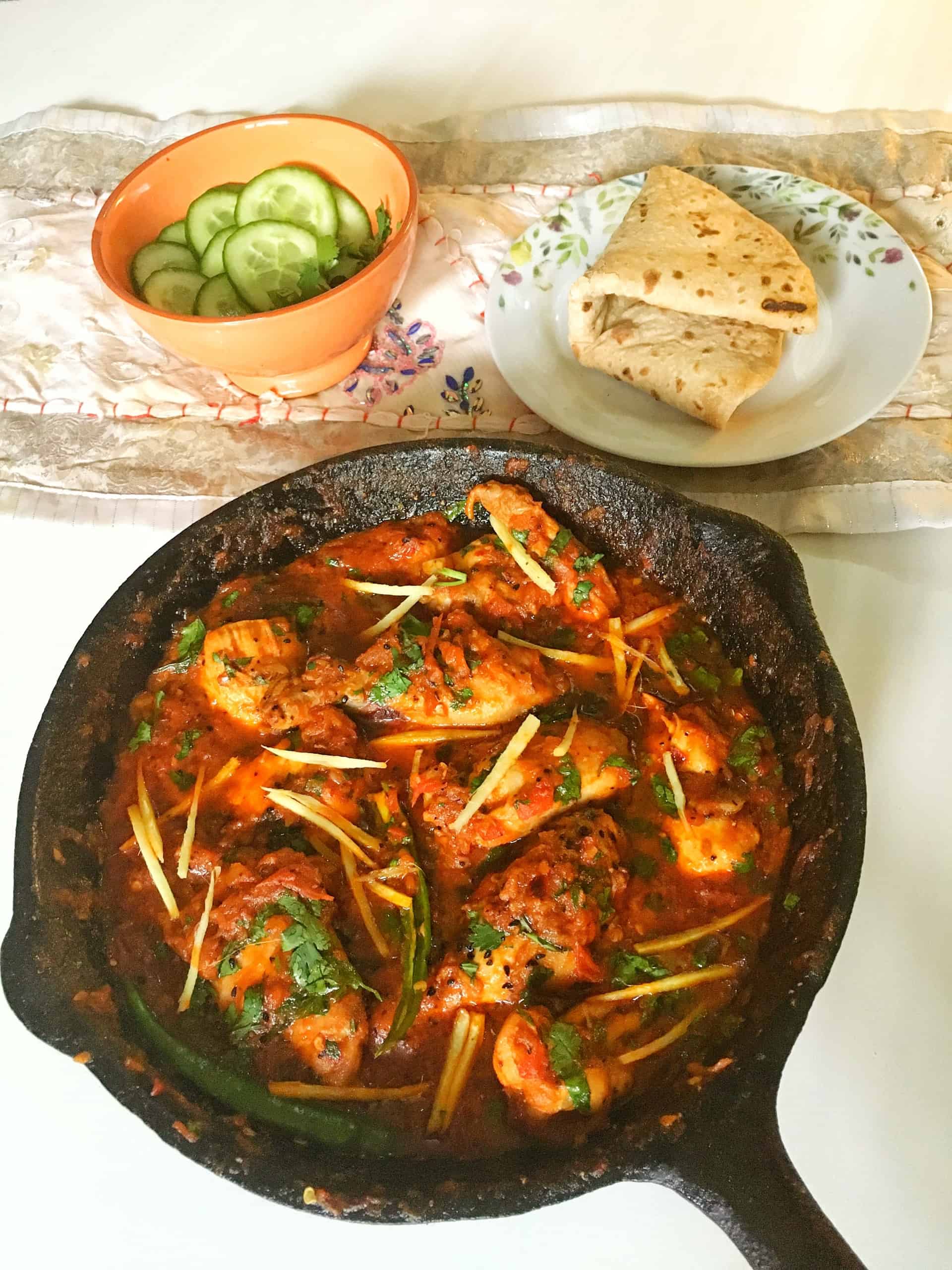
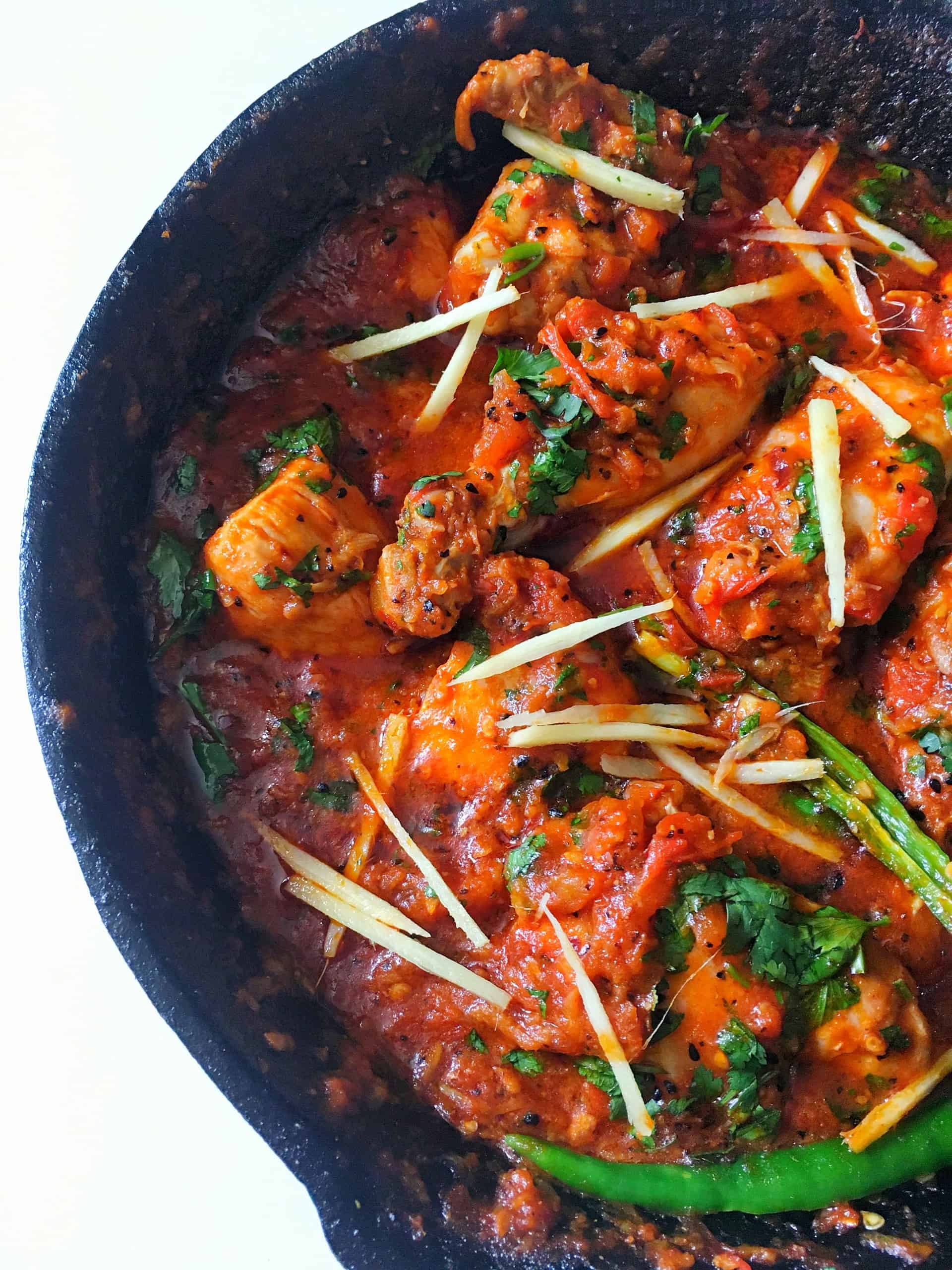





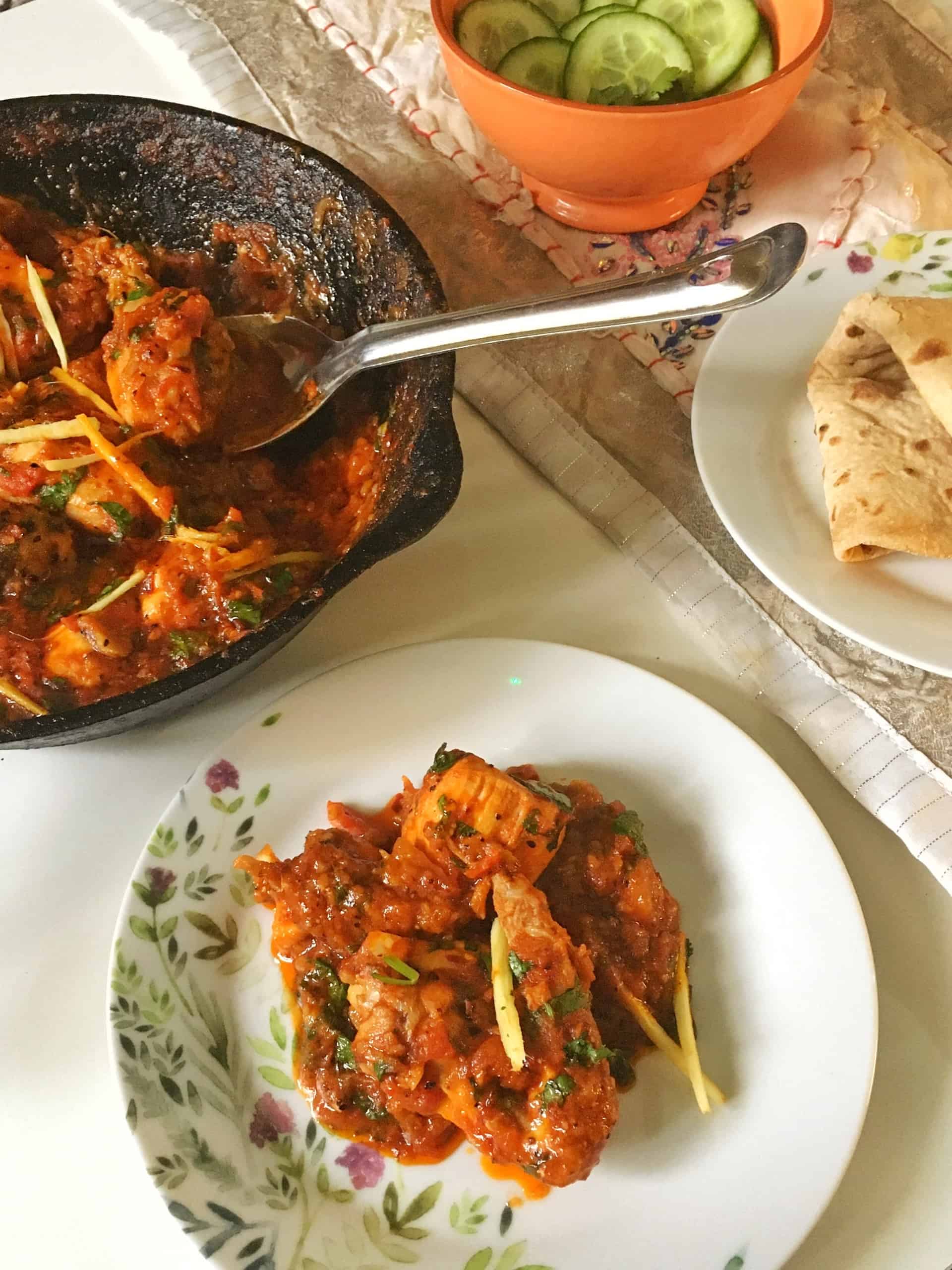

title: “Chicken Karahi Recipe” ShowToc: true date: “2024-11-07” author: “Donald Baugh”
What to serve with karahi?
Tandoori naan, roti, roughni naan, pita bread, chapati all pair well with karahi. A fresh salad with rinsed sliced onions makes a very good match. Also, avoid crowding the pan and cooking karahi in bulk as the moisture won’t evaporate easily and you will miss the rich karahi taste. If you need to cook for a large group, consider cooking in two separate works. Sometimes tomatoes could have a raw taste if chicken karahi is cooked on high flame. Both conditions will spoil the taste and delicacy of Karahi. So frying chicken and then adding to tomato later helps overcome over-cooking of chicken.
Chicken: Bone-in chicken is best for karahi. Boneless chicken can also work but the fats from bones add more flavor to karahi. Ghee or oil: I used oil in this recipe to keep it simple and healthier. But the dhabas use ghee and I must confess ghee AKA clarified butter tastes much better. If you don’t have ghee consider using a mix of oil and butter. Lastly, Dhaba karahi is loaded with fat and I’m using bare minimum fat. You can’t reduce it further or karahi would taste watery and not as good. Fresh tomatoes: Fresh, flavorful, deep red, fully ripened, and firm tomatoes add a lot of flavor to the recipe. I used freshly made puree because we don’t like tomato skins in a karahi. But sliced tomatoes also work very well and are easier too. Ginger: Chicken Karahi means a load of ginger garnish and more ginger in the curry. The depth of taste comes from fresh ginger. Black pepper: Freshly grounded pepper tastes far more intense than bottled pepper. So the extra effort of grinding is worth it. Green chilies: Just like ginger, green chilies are a must for karahi. And the aroma of chilies plays a big role in the overall Karahi look and flavor. Look for thicker and less spicy chilies for garnish. While in the curry goes smaller spicier chili paste. Dried fenugreek, optional: This adds a very Punjabi or Lahori touch to the karahi but you can skip it. Get more info about fenugreek here. Kashmiri chili powder or paprika: This ingredient is mainly for the color of chicken karahi. But if your tomatoes have rich red color, you can do without it.
Using tomato puree instead of sliced tomatoes is also helpful to get an even texture with the skin. But if you cook long enough sliced tomatoes work well too and dissolve quickly. Cooking tomatoes for a long is necessary because tomatoes release lycopene upon slow cooking. So if you don’t give the tomato enough time to cook. It gives a raw taste to a chicken karahi. Authentic chicken karahi doesn’t have onions. And you can skip it if you like less gravy. I added a small onion so I have enough masala to be enjoyed with naan. Alternately, you can add 1 extra tomato to skip the onion.
If you try this Chicken Karahi recipe, I’d LOVE to hear your feedback in the comments. Your 5-ratings motivate me to do my best. Stay connected for more recipes and videos on Facebook, Instagram, Pinterest, and Youtube.
📖 Recipe

